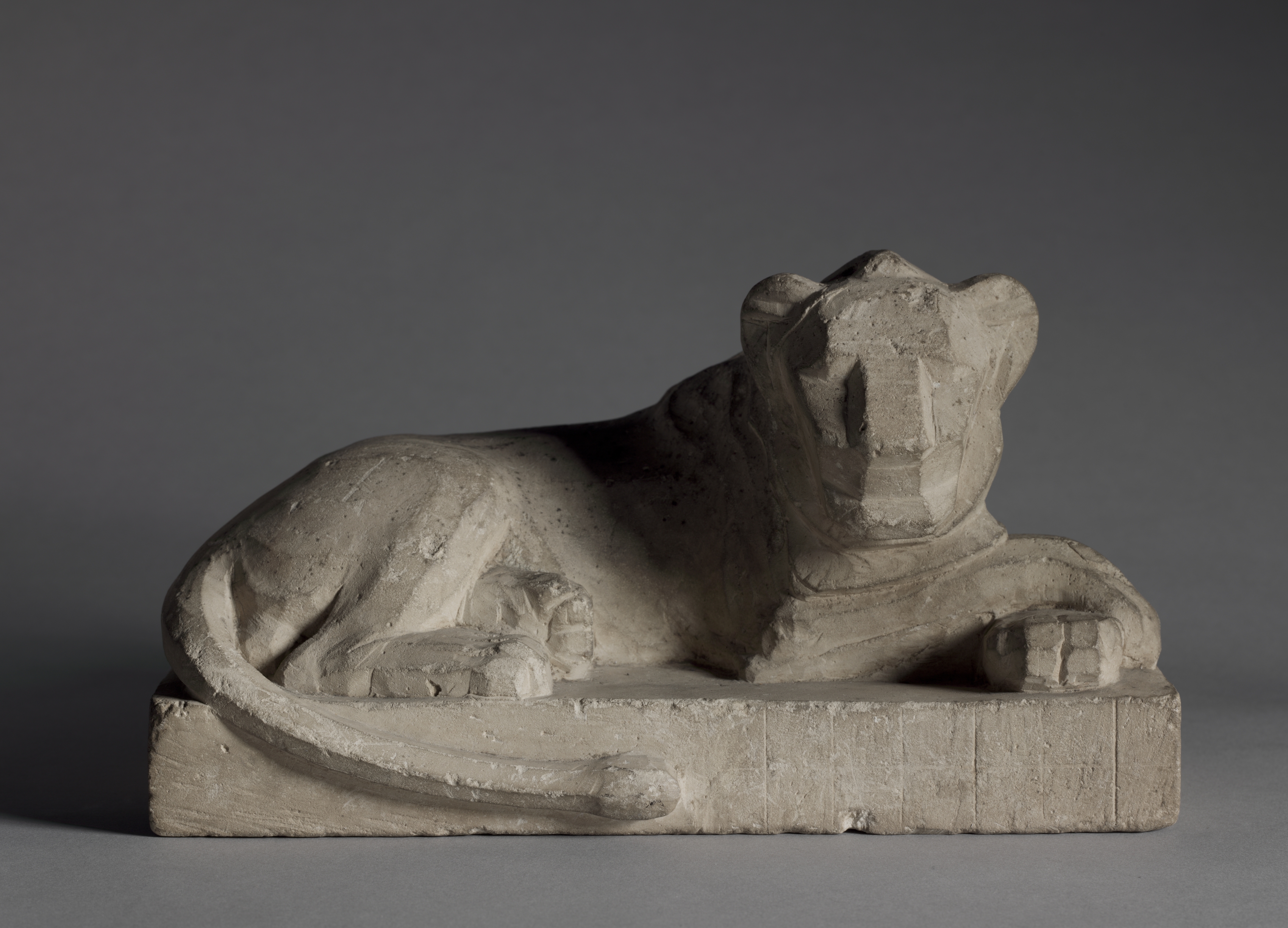The Cleveland Museum of Art
Collection Online as of April 19, 2024

Statuette of a Lion
380–246 BCE
(715–332 BCE)
Overall: 13.8 x 12 cm (5 7/16 x 4 3/4 in.)
Location: 107 Egyptian
Did You Know?
In antiquity, lions were often associated with rulers and this miniature sculpture likely depicts the Egyptian lion god Mahes. In ancient Egypt, a special city known as Leontopolis, or "Lion-City," had a temple dedicated to this deity in which live lions were kept. This small limestone sculpture would have been at home in such a location.Description
Lions in Egyptian art are usually shown prone and relaxed, and usually represent the king. But this statuette probably represents the lion god Mahes who had a great temple at Leontopolis ("Lion-City") in the Delta where lions were kept. We know from classical authors that the temple maintained musicians to play to the lions to calm their nerves.- Said to be from Leontopolis (Tell el-Muqdam). Purchased from Maurice Nahman, Cairo, through Howard Carter
- University of Missouri--Columbia. Egyptian Art Under the Greeks and Romans, 332 B.C. to A.D. 330: Museum of Art and Archaeology, University of Missouri-Columbia, September 26-November 15, 1987. Columbia, Mo: Museum of Art and Archaeology, University of Missouri-Columbia, 1987. No. 132Berman, Lawrence M., and Kenneth J. Bohač. Catalogue of Egyptian Art: The Cleveland Museum of Art. Cleveland, OH: Cleveland Museum of Art, 1999 Reproduced and Mentioned: p. 468-9
- Egyptian Art Under the Greeks and Romans: 332 B.C. to A.D. 330, Museum of Art and Archaeology, University of Missouri-Columbia (September 26-November 15, 1987).
- {{cite web|title=Statuette of a Lion|url=false|author=|year=380–246 BCE|access-date=19 April 2024|publisher=Cleveland Museum of Art}}
Source URL:
https://www.clevelandart.org/art/1920.2001